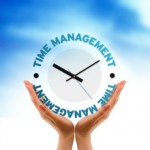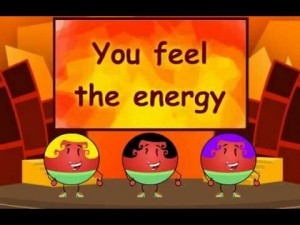
If you have someone with an old sports injury or who has recently undergone surgery, or just somebody where it feels like their muscles are bound up and barely have any room to move, that’s a good indication that the top layer of the musculoskeletal system may need some stretching to give the muscles room to expand. So, myofascial can be a wonderful way to start a massage to make sure that the rest of the work will have the most beneficial impact.
One time, though, I had a massage therapist who started using myofascial release on me as the very first technique in our massage session and proceeded to do it for close to 30 minutes, which was a full half of the session. I found that very unusual because myofascial usually doesn’t involve any oil or lotion, and most of the time, someone’s applying oil or lotion within the first few minutes of a session.
If someone comes in and their main complaint is stress or a busy life, and they’d really just love to have an hour to relax into a nice Swedish experience, they’re going think it’s weird that for half their massage there isn’t even any oil or lotion being used and you’re just pulling on the top layer of their skin. It’s about the context, and it’s about your intent as well as your client’s goals. It’s important to remember that if you’re going to start off and do a lot of myofascial work, which might be the right thing to do, you need to be sure to tell your client why. Consider the typical experience your client may have had before in massage, and clearly dialogue through it.

 We’ve all heard from clients the occasional horror stories of their having been “brutalized” in a session with another massage therapist in which techniques were used that were so deep as to be painful and leave them bruised. Some of us may have even experienced that type of massage ourselves. How does that happen?
We’ve all heard from clients the occasional horror stories of their having been “brutalized” in a session with another massage therapist in which techniques were used that were so deep as to be painful and leave them bruised. Some of us may have even experienced that type of massage ourselves. How does that happen? I’ve noticed a ‘narrowing syndrome’ that sometimes develops among experienced massage therapists. When you first go to massage school, you learn all sorts of techniques which are new and exciting, and you try them all on your clients. Then, as you practice and become increasingly more confident, you find that a certain set of techniques emerge as your favorites. You develop a level of comfort and expertise with them, and you use them increasingly often. What can happen over time, though, is that by favoring those few techniques, many of the others that you learned go unpracticed and, eventually, get forgotten. This narrowing of your repertoire can lead to clients experiencing massage from you that consists entirely of only one or two techniques.
I’ve noticed a ‘narrowing syndrome’ that sometimes develops among experienced massage therapists. When you first go to massage school, you learn all sorts of techniques which are new and exciting, and you try them all on your clients. Then, as you practice and become increasingly more confident, you find that a certain set of techniques emerge as your favorites. You develop a level of comfort and expertise with them, and you use them increasingly often. What can happen over time, though, is that by favoring those few techniques, many of the others that you learned go unpracticed and, eventually, get forgotten. This narrowing of your repertoire can lead to clients experiencing massage from you that consists entirely of only one or two techniques. Let’s say you have a big, beefy athlete of a client on the table, with lots of delicious areas to work on. You dive in. You get the belly of the muscles. You get into the soleus, work their erectors. You proceed to work on their arms and get into the deltoids. Everything’s great, but you have to ask yourself: are you massaging the whole muscle?
Let’s say you have a big, beefy athlete of a client on the table, with lots of delicious areas to work on. You dive in. You get the belly of the muscles. You get into the soleus, work their erectors. You proceed to work on their arms and get into the deltoids. Everything’s great, but you have to ask yourself: are you massaging the whole muscle? In today’s digital age, with so many of our clients (and ourselves!) spending so much time hunched around our smartphones, curled up with our tablets, and bent over our laptops, a new syndrome, which I call “computeritis,” seems endemic. It may be common for massage therapists once they hear of a client’s heavy use of such devices to jump to conclusions as to the culprit of the client’s pain. It’s important that ‘Computeritis” not be our first or only assumption when a client presents with neck or shoulder pain and tension. It’s vital that we get a fuller picture of our client’s lifestyle, without which we could very well be assuming and jumping to incorrect conclusions and to an incorrect treatment approach.
In today’s digital age, with so many of our clients (and ourselves!) spending so much time hunched around our smartphones, curled up with our tablets, and bent over our laptops, a new syndrome, which I call “computeritis,” seems endemic. It may be common for massage therapists once they hear of a client’s heavy use of such devices to jump to conclusions as to the culprit of the client’s pain. It’s important that ‘Computeritis” not be our first or only assumption when a client presents with neck or shoulder pain and tension. It’s vital that we get a fuller picture of our client’s lifestyle, without which we could very well be assuming and jumping to incorrect conclusions and to an incorrect treatment approach. Clients can seek massage for stress relief and relaxation, or for therapeutic work on a specific problem. Sometimes a client with an acute problem comes for general relaxation and stress relief. You can’t assume that just because they have a chronic issue that that’s always why they’re there.
Clients can seek massage for stress relief and relaxation, or for therapeutic work on a specific problem. Sometimes a client with an acute problem comes for general relaxation and stress relief. You can’t assume that just because they have a chronic issue that that’s always why they’re there.
 Are you looking to build your client base? When you already have some happy clients returning to see you, but you still have lots of empty slots in your appointment book, the best way to fill those empty slots is through the slots that are already filled. One of the easiest, but most overlooked marketing tips of all is to turn to those clients who are already coming to see you.
Are you looking to build your client base? When you already have some happy clients returning to see you, but you still have lots of empty slots in your appointment book, the best way to fill those empty slots is through the slots that are already filled. One of the easiest, but most overlooked marketing tips of all is to turn to those clients who are already coming to see you. One of the most challenging things for a lot of therapists can be finding themselves in an intake with a new client where the connection just isn’t happening. Maybe they look at their shoes the whole time, or they’re sighing and looking out the window. You know, no click. It takes a real dedication to our profession, and a certain level of maturity, to be able to put that non-clicking, or non-connectedness, aside and still provide somebody with a thorough and caring intake to craft a massage plan that meets their needs.
One of the most challenging things for a lot of therapists can be finding themselves in an intake with a new client where the connection just isn’t happening. Maybe they look at their shoes the whole time, or they’re sighing and looking out the window. You know, no click. It takes a real dedication to our profession, and a certain level of maturity, to be able to put that non-clicking, or non-connectedness, aside and still provide somebody with a thorough and caring intake to craft a massage plan that meets their needs. Massage therapy can be a very fulfilling career, but it can unfortunately end up being a short one for many of us. That’s because certain energetic self-care is absolutely indispensable, but often overlooked. Most of us who practice massage find a way to mind our body dynamics, but do we take care to maintain good hygiene needed to keep our ‘energetic field’ clean?
Massage therapy can be a very fulfilling career, but it can unfortunately end up being a short one for many of us. That’s because certain energetic self-care is absolutely indispensable, but often overlooked. Most of us who practice massage find a way to mind our body dynamics, but do we take care to maintain good hygiene needed to keep our ‘energetic field’ clean?